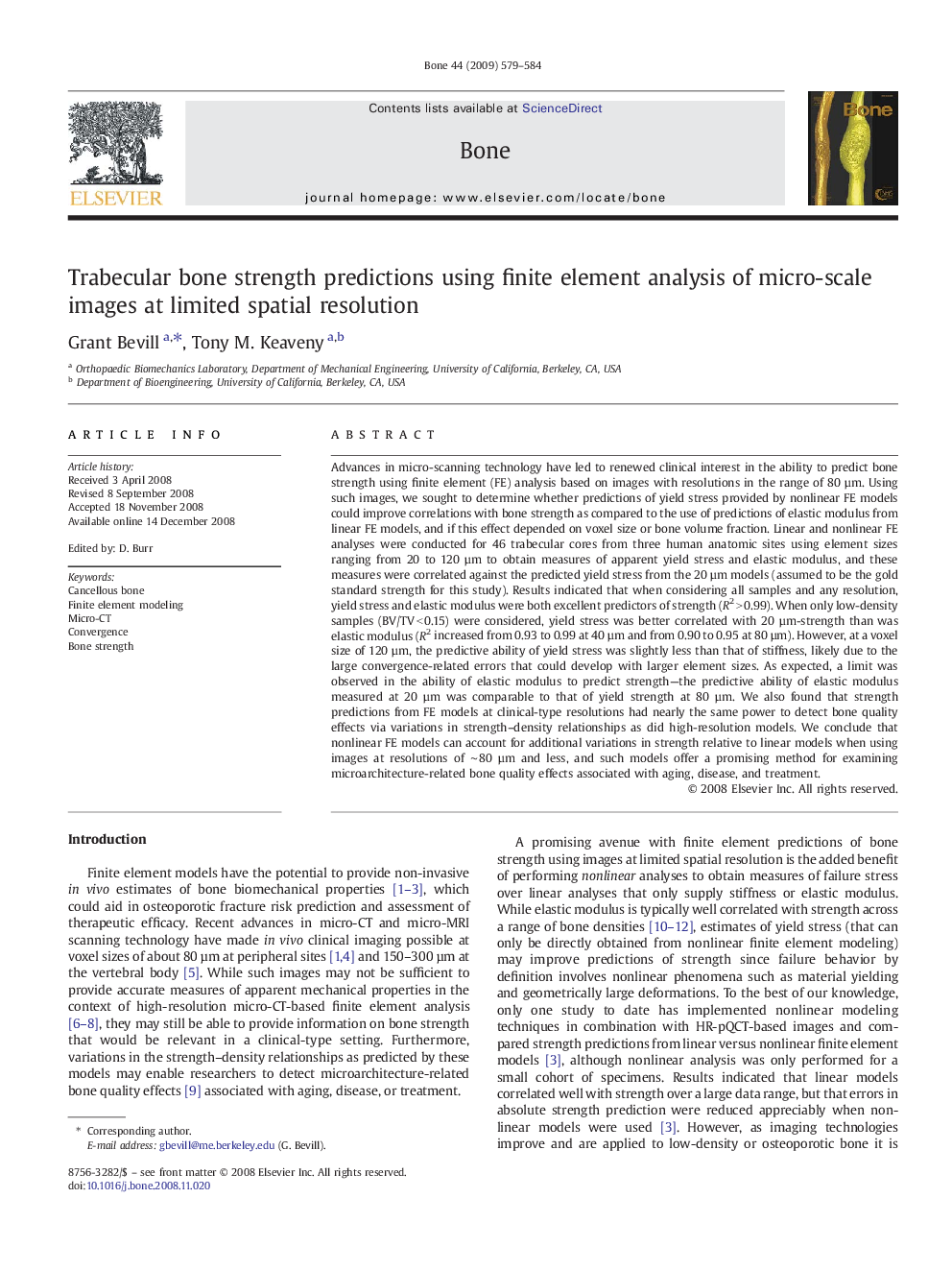| کد مقاله | کد نشریه | سال انتشار | مقاله انگلیسی | نسخه تمام متن |
|---|---|---|---|---|
| 5892606 | 1153329 | 2009 | 6 صفحه PDF | دانلود رایگان |
عنوان انگلیسی مقاله ISI
Trabecular bone strength predictions using finite element analysis of micro-scale images at limited spatial resolution
دانلود مقاله + سفارش ترجمه
دانلود مقاله ISI انگلیسی
رایگان برای ایرانیان
کلمات کلیدی
موضوعات مرتبط
علوم زیستی و بیوفناوری
بیوشیمی، ژنتیک و زیست شناسی مولکولی
زیست شناسی تکاملی
پیش نمایش صفحه اول مقاله

چکیده انگلیسی
Advances in micro-scanning technology have led to renewed clinical interest in the ability to predict bone strength using finite element (FE) analysis based on images with resolutions in the range of 80 µm. Using such images, we sought to determine whether predictions of yield stress provided by nonlinear FE models could improve correlations with bone strength as compared to the use of predictions of elastic modulus from linear FE models, and if this effect depended on voxel size or bone volume fraction. Linear and nonlinear FE analyses were conducted for 46 trabecular cores from three human anatomic sites using element sizes ranging from 20 to 120 µm to obtain measures of apparent yield stress and elastic modulus, and these measures were correlated against the predicted yield stress from the 20 µm models (assumed to be the gold standard strength for this study). Results indicated that when considering all samples and any resolution, yield stress and elastic modulus were both excellent predictors of strength (R2 > 0.99). When only low-density samples (BV/TV < 0.15) were considered, yield stress was better correlated with 20 µm-strength than was elastic modulus (R2 increased from 0.93 to 0.99 at 40 µm and from 0.90 to 0.95 at 80 µm). However, at a voxel size of 120 µm, the predictive ability of yield stress was slightly less than that of stiffness, likely due to the large convergence-related errors that could develop with larger element sizes. As expected, a limit was observed in the ability of elastic modulus to predict strength-the predictive ability of elastic modulus measured at 20 µm was comparable to that of yield strength at 80 µm. We also found that strength predictions from FE models at clinical-type resolutions had nearly the same power to detect bone quality effects via variations in strength-density relationships as did high-resolution models. We conclude that nonlinear FE models can account for additional variations in strength relative to linear models when using images at resolutions of â¼Â 80 µm and less, and such models offer a promising method for examining microarchitecture-related bone quality effects associated with aging, disease, and treatment.
ناشر
Database: Elsevier - ScienceDirect (ساینس دایرکت)
Journal: Bone - Volume 44, Issue 4, April 2009, Pages 579-584
Journal: Bone - Volume 44, Issue 4, April 2009, Pages 579-584
نویسندگان
Grant Bevill, Tony M. Keaveny,